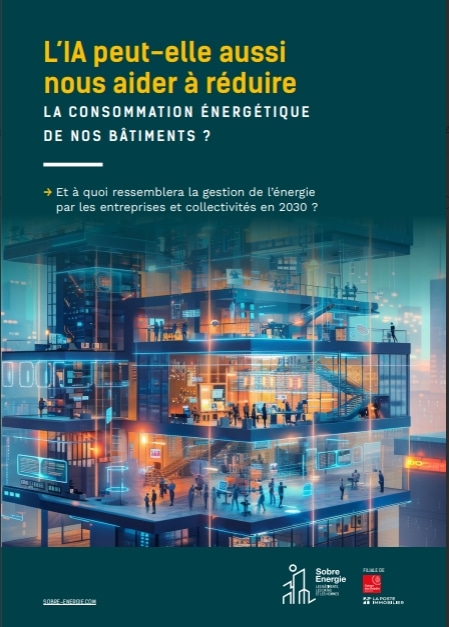While the French government recently submitted its National Low Carbon Strategy (SNBC) for consultation, the development of renewable energies is a major focus. And this will indeed involve objectives, from 2026 for parking lot shades. A new decree specifies the Acceleration Law for Renewable Energy (APER) of 2023.
The imperative to decarbonize the building sector
France has committed to an ambitious decarbonization strategy, in line with the recommendations of the Intergovernmental Panel on Climate Change (IPCC). Tertiary buildings, which include office, retail, educational and administrative buildings, are at the heart of this strategy. These buildings represent a significant part of greenhouse gas (GHG) emissions in France (16% of gross emissions).
The National Low Carbon Strategy (SNBC), launched by the State in 2015, imposes clear objectives for reducing GHG emissions by 2050. It plans for the building sector (residential and tertiary combined) to reduce by 95% GHG emissions over this horizon.
To achieve this, it is essential to reduce the consumption of fossil energy and encourage the use of renewable energies. Particularly for heating buildings by replacing oil or gas boilers with heat pumps.
The lever of photovoltaic solar
Reminder of the APER law
The APER law (Acceleration for Renewable Energies), adopted in 2023, aims to facilitate and accelerate the deployment of renewable energies in France. This law simplifies administrative procedures for the installation of photovoltaic panels, particularly on tertiary buildings, which contributes to the acceleration of self-consumption. It therefore makes the installation of solar panels on the roof compulsory by 2028 for tertiary buildings of more than 500m². But also the installation of photovoltaic shades for car parks of more than 1500m² by 2026/2028.
Details of the new decree of November 13, 2024
This decree n°2024-1023, implementing article 40 of law n°2023-175 of March 10, 2023 relating to the acceleration of the production of renewable energies, was eagerly awaited.
The deadline for equipping outdoor parking lots of more than 10,000 m² with solar panels on shades is maintained at July 2026. For smaller parking areas (from 1,500 to 10,000 m²), the deadline will run until July 2028.
The government has therefore confirmed its desire, despite requests from representatives of large-scale distribution and mobility in particular, to benefit from a two-year period to cover their 70 million square meters of parking areas.
“These outdoor parking lots with an area greater than 1,500 square meters are equipped, over at least half of this area, with shade structures integrating a renewable energy production process over their entire upper part ensuring the shady. »
The decree of November 13 also specifies the calculation of the subject area, this calculation includes:
Locations intended for parking vehicles and their trailers, located outside the public highway, within a perimeter included between the entrance(s) and exit(s) of the park
The lanes and traffic routes, facilities and toll areas allowing access to these locations, within the same perimeter.
However, the following are not included in the calculation of their surface area:
- Green spaces, rest areas, storage areas, logistics, handling, loading and unloading spaces
- Parts where vehicles transporting dangerous goods are parked, specified by the order mentioned in the last paragraph of this III
- The parts located less than ten meters from an installation classified for environmental protection falling under sections of the nomenclature annexed to article R. 511-9 of the environmental code, listed by the same decree
- Areas, specified by the same decree, necessary for the implementation of the requirements applicable to installations classified for environmental protection.
The decree also specifies exceptions for the following reasons:
- Presence of technical, security, architectural, heritage and environmental constraints or those relating to sites and landscapes do not allow the installation of solar devices
- When these obligations cannot be satisfied under economically acceptable conditions
- When the park is shaded by trees on at least half of its surface area
“The criteria relating to these exemptions are specified by decree of the Council of State. It is up to the park manager to demonstrate that it meets these criteria. »
As a reminder, the APER law provides for financial sanctions:
20,000 euros per year until compliance, if the park has an area of less than 10,000 square meters and 40,000 euros per year if the park has an area greater than or equal to 10,000 square meters.
The potential of photovoltaics
In a context of decarbonization of buildings, but also of transport (the largest GHG emitting sector in France with 34% of emissions last year), the electrification of our uses is a crucial issue.
Our national energy mix tomorrow will be more electric and less carbon-intensive. Consume better, but also consume less in the spirit of the Tertiary Decree.
And tertiary buildings have a key role to play in helping to make electricity demand on the network more flexible.
GTB to manage production and self-consumption
The installation of building automation and control systems GTB (Technical Building Management) aims to improve the energy performance of tertiary buildings with:
The integration of devices allowing the automatic regulation of heating, ventilation, air conditioning (HVAC), and lighting.
The implementation of management systems to monitor energy consumption in real time, which facilitates the identification of areas for energy savings.
The objective is to enable more efficient energy management, by aligning the use of equipment as closely as possible with the building's solar production phases. And thus by reducing waste and unnecessary consumption, which is essential to respect the trajectories for reducing greenhouse gas emissions set by law.

A non-wired “light” BMS solution makes it possible to consolidate the management of tertiary buildings for energy savings of between 20% and 30%.
Storage by electric vehicles
Beyond tertiary buildings, this issue of flexibility of the electricity network also concerns residential individuals. The Energy Regulatory Commission has launched a consultation to revise the regulated electricity sale prices***.
Objective: review the off-peak/peak hour pricing system which currently encourages people to shift their electricity consumption at night. Instead, to encourage consumers to adapt their uses to times when solar production is high.
